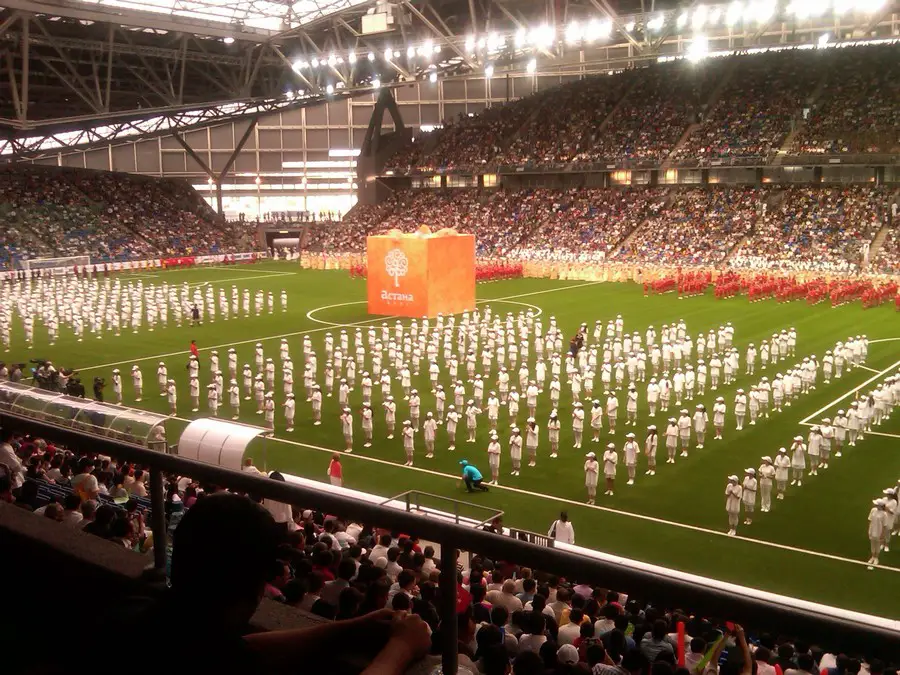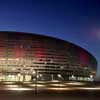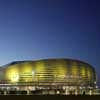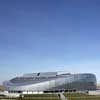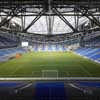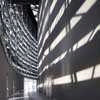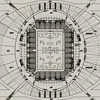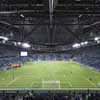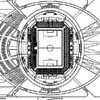Astana Arena, Kazakhstan Building, Asian Stadium Design News, Image, Sports Venue Project, Photo
Astana Arena Kazakhstan Stadium
Major Sports Building in Kazakhstan, Central Asia – design by Tabanlioglu Architects + Populous
11 Mar 2013
Astana Stadium Building
Design: Populous + Tabanlioglu Architects
Kazakhstan Stadium Development
Kazakhstan has a new national stadium, the Astana Arena. The multi-functional stadium with retractable roof was designed by Populous in association with Tabanlioglu Architects.
Astana Stadium building:
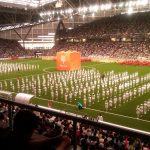
image from architect
The two-tiered structure was conceived as a large amphitheatre and can seat 33,000 spectators. It’s distinctive elliptical shape is easily recognisable and has become a landmark for the city of Astana.
There is effective crowd management of VIPs, spectators and players to ensure smooth access to all users and a swift dispersion of the fans after an event. Each seat of the arena has an unobstructed view of the field of play. The playing surface is covered in high quality artificial turf specified to meet FIFA and UEFA criteria. The grass can be covered for other events such as wrestling, judo and boxing.
Even when the roof is closed, natural light penetrates the heated and air-conditioned building through polycarbonate roof panels. The design also introduces high-tech principles that will set reference for future sport arenas under harsh climatic conditions of the geography.
17 Feb 2010
Astana Arena
Design: Tabanlioglu Architects
Intended to be a symbol of the burgeoning new capital of Kazakhstan, the Astana Arena has a spectacular elliptical form and a retractable roof that can be closed in harsh winter weather conditions to protect the players, the spectators and the playing surface. Located on the highway connecting the airport to the city the stadium is principally designed as a venue for soccer but it can be adapted for other sports events including the country’s favourite sports – wrestling, judo and boxing. The venue, set within extensive landscaping, has quickly become a landmark in the city.
The stadium, designed on an elliptic form, is constructed on a 232,485 m² (330m x 704.5m) rectangular site. The design introduces innovative solutions adopting high technology principles for operational management, interaction with the environment and especially with harsh climatic conditions of the geography.
The 30,000 Arena was conceived as a large amphitheatre with a distinctive and instantly recognisable form when viewed from a distance and from close proximity. Essentially a two-tiered structure, the lower terrace, accommodating 16,000 seats, encircles the playing area while the upper stand on the east and west sides seats a further 14,000 spectators. There is effective separation of VIPs, spectators and players to ensure smooth access. All spectators are seated and have a clear sight line with an unobstructed view of the field of play. The playing surface is covered in high quality grass surface specified to meet FIFA and UEFA criteria. The grass can be covered for other events.
The Presidential Suite and sixteen VIP suites, are located on the west side of the Arena between the upper and lower terraces and are served by private elevators from the main concourse. The media section, the main control room, TV broadcasting facilities, restaurants, bars and a VIP reception hall are in the same section. Management offices, central control unit, police rooms, 4 player dressing rooms each designed for 24 people, referee dressing room designed for 4 people, room for 3 game delegates, doping test room, 2 warm-up areas, a flash interview room, a press conference room with a capacity of 100 people, media room for 200 people, photographers room, TV studios, wrestling & boxing saloon and corridors are the other major integrals of the facility.
Each spectator’s platform has its separate stairways; the vertical scale of the facility, the positioning and the height of vertical transportation provide easier access to the roads around the stadium. The circulation is maintained by platforms on 5.50 level. Six separate zones take place behind the different levels of the stand areas; a spacious ambulatory runs around the stands linking to a concourse that contains food kiosks, restaurants and restrooms and 24 portals around the Arena ensure that the crowd are able to disperse swiftly after an event.
The sliding roof is an integral part of the structure of the stadium. When it is closed, it converts the stadium into a covered arena; whether closed or open, the roof is an elementary part of the whole. The elliptical geometry reveals itself on the weatherproof roof shell. Two deep steel trusses run in an east-west direction carrying the main roof structure and also bear the weight of the sliding roof components.
When weather conditions deteriorate the two moving parts are activated and slide over the cantilevered main roof elements, to meet above the centre of the bowl. It is an impressive spectacle when the giant roof panels glide toward each other. Polycarbonate panels in the retractable roof ensure natural light enters the Arena even when the roof is closed and besides light transmittance, the membrane material resists deformation and has sound absorption.
The Arena floodlighting is mounted on the leading edge of the main roof beams thus obviating the need for corner pylons and ensuring there is minimal light spillage. Closing the roof reduces noise pollution to the surrounding area and simultaneously intensifies the competitive atmosphere within the Arena. When the roof is closed the Arena can be used as a covered arena for a variety of activities.
A concrete structure is proposed to provide an economical yet durable structure with good resistance against weather conditions. The stands will be prefabricated concrete. The reinforced concrete surfaces will be kept as solid concrete. Main structure of the areas below the stands is reinforced concrete; the closed areas below the stands and the main structure of the stands are reinforced concrete. Durable, strong, easily cleaned and aesthetical materials will be used as floor, wall and ceiling coverings, the material require minimal maintenance.
Natural stone will be another choice of material for the VIP and Presidential Suits, connecting corridors and the other areas around this zone, like the restrooms. The main structure, designed by Buro Happold, is insitu reinforced concrete while prefabricated concrete elements are used in the construction of the stands. Parts of the east and west elevations are faced in profiled aluminium cladding.
The Astana Arena is intended to be a symbol of the growing international stature of the new capital of Kazakhstan. Sport and specifically soccer creates a common link between people of different cultures and international games are beamed around the globe by satellite TV. In this sense the Astana Arena is a link between Kazakhstan and the world. The Football Union of Kazakhstan joined FIFA in 1994 and became a member of UEFA in 2002.
In the process sport has developed as the major global culture extending its reach to embrace all people regardless of religion, race or colour. Astana Arena, a powerful expression of this new global imperative, is conceived as a large fortress, which makes a distinctive impression both when it is seen from a distance and from close up; it will constitute a charming urban landscape and become a new scene in Astana tallying with the synergy of sports, games, hospitality, nature and contemporary architecture.
Astana Arena Kazakhstan – Building Information
Client: Alke – Sembol
Architect: Tabanlioglu – Melkan Gürsel & Murat Tabanlioglu
Architectural Project Team: Murat Cengiz, Salih Yilgörür, Hakan Bagci, Süleyman Akkas, Nihal Senkaya Akkas, Mehmet Vaizoglu, Serhat Yavuz, Arzu Çetingöz, Ahmet Çorapçioglu
Structural Engineer: Buro Happold (London) Arce (Istanbul)
Mechanical Engineer: Dinamik
Electrical Engineer: HB Teknik
Sports Consultant: Populous
Main Contractor: Alke – Sembol
Site Area: 232.485 m² ( 330m x 704.5m )
Construction Area: 66.249 m²
Hard / Soft Landscape: 194.531 m²
Project & Construction Date: 2005-07
Occupancy: 2009
Photography: Cemal Emden Astana Arena Kazakhstan images / information from Tabanlioglu Architects
Location: Astana, Kazakhstan, Central Asia
Kazakhstan Architecture Designs
Contemporary Kazakhstan Architectural Selection
Kazakhstan Architecture Designs – chronological list
Kazakhstan Buildings – Selection
Astana Kazakhstan State Auditorium
Architect: Manfredi Nicoletti and Luca Nicoletti
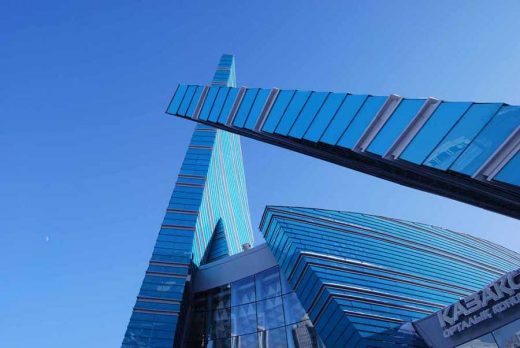
photo © Studio Nicoletti Associati, photograph: Simone Levi
Astana Kazakhstan State Auditorium building
Khan Shatyry Entertainment Centre, Astana
Design: Foster + Partners
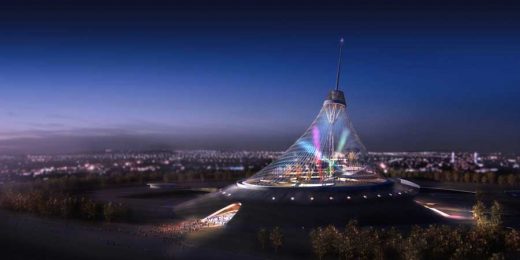
image : Foster + Partners
Khan Shatyry Astana
National Library in Astana
Design: BIG
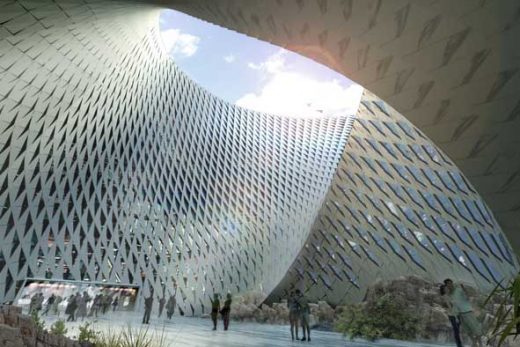
image from architect
National Library in Astana Building
Central Markets – Abu Dhabi Plaza, Astana
Architects: Foster + Partners
Kazakhstan tower : Abu Dhabi Plaza
Website: Astana Kazakhstan
Comments / photos for the Astana Arena – Kazakhstan Sports Architecture page welcome

